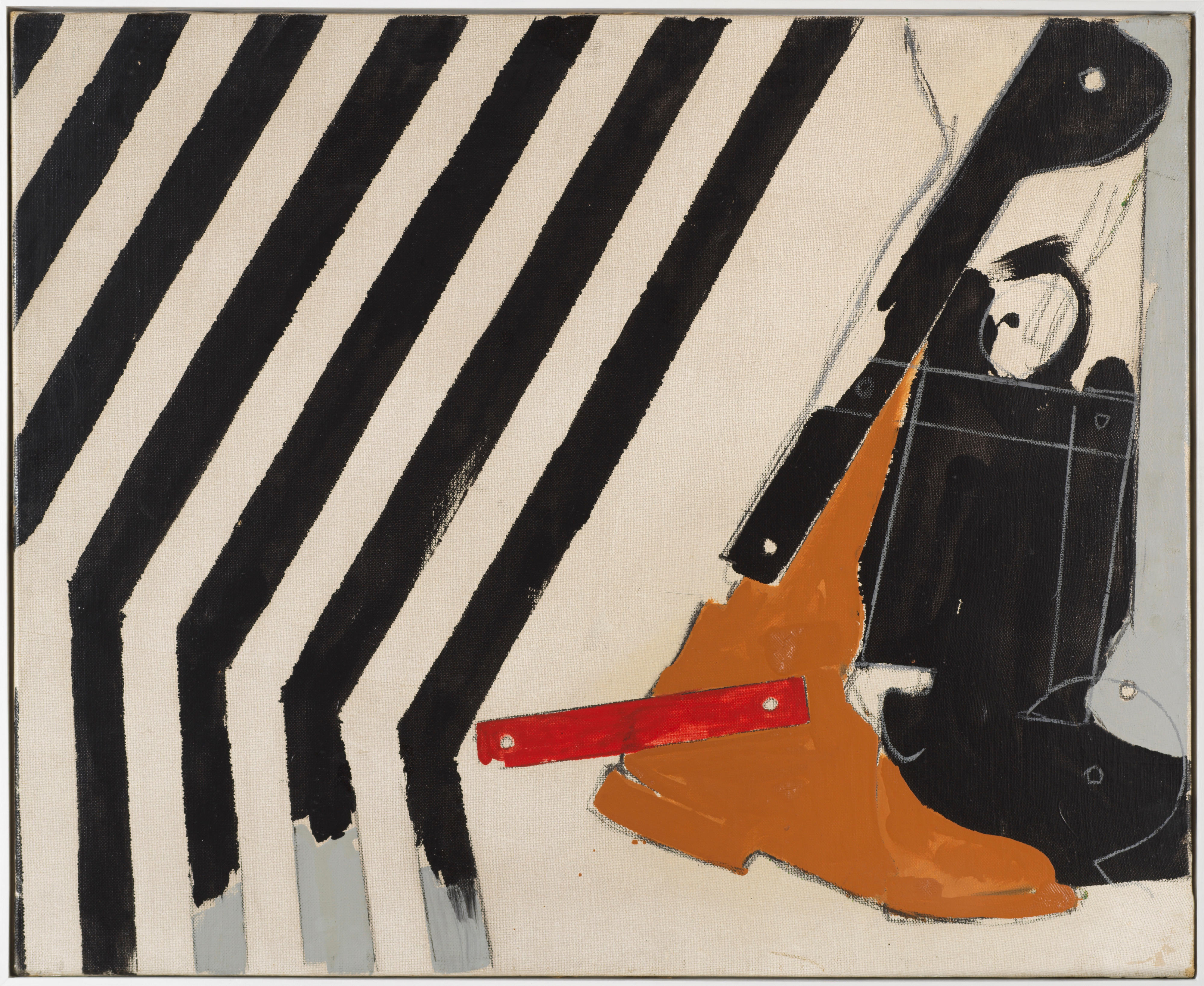Mario Schifano
b. 1934, Khoms, Libya
d. 1998, Rome, Italy
Dopo le Strisce (After the Stripes)
1965
Oil, enamel, pastel and pencil on canvas
60 x 73 cm (23 5/8 x 28 3/4 in.)
With frame: 78.5 x 91.5 x 4.5cm
Provenance
Literature
Description
Mario Schifano was one of the foremost exponents of the Roman group of artists known as the Scuola di Piazza del Popolo, active during the 1960s. The group emerged in response to the international movements more in vogue at the time such as Pop Art, New Dada and Nouveau Réalisme, with Roman artists wanting to demonstrate their independence from American art and bring Rome back into the international art scene. The group’s main protagonists were Mario Schifano, Tano Festa and Franco Their means and their materials were close to Pop Art, however their choice of subject matter drew from the history of Italian art and the imagery of the streets of Rome. Thus, the production of the Piazza del Popolo group wrestles with the relationship with American art: on the one hand the artists were attracted by it, but on the other its supremacy pushed them to experiment with new imagery in art that was completely detached from it. Besides being the most well-known of those artists, Schifano’s oeuvre also most clearly reveals these mixed feelings of attraction and rejection that he and his fellow artists experienced towards the United States.
After the Stripes, or Dopo le strisce, was created following Schifano’s visit to the United States in 1963 and 1964. During his time there, Schifano had the chance to work in close contact with artists such as Andy Warhol. Schifano continued travelling back and forth from New York to Rome, and his art was deeply informed by his ambivalent attitude to the art he discovered stateside. The use of industrial materials such as enamel and the inclusion of Pop elements, in this case the bold stripes of the zebra crossing, reveals the influence of Pop Art. Moreover, the repetition of the black lines and shoes recall Warhol's serial use of images. Nevertheless, in Schifano the repetition of the subject is not mechanical, but rather handmade. The artist leaves space for imperfections in order to emphasise the handcrafted element of the work and to echo the tradition of Italian handmade products. Furthermore, the serial repetition of forms is also a reference to Italian art history, more precisely to Futurism. The repetition of the shoe could be read as an attempt to represent or study movement and speed, something that had always fascinated Futurists such as Giacomo Balla. Other works by Schifano explore the same theme, for instance Camminare and A la Balla, 1965 (fig. 1). Thus, Dopo le Strisce is exemplary of Schifano’s work during the sixties and encapsulates the attitude of Roman artists towards art at the time. The work mixes elements from low culture and Pop Art with elements from the so-called "high" culture, drawing directly from the Italian history of art.
The present work is accompanied by a certificate of authenticity from the Mario Schifano Archive, Rome, n.03972190413.
Fig. 1. Mario Schifano, A la Balla 65 (1965), enamel and pencil on canvas, 150 x 96 cm.




